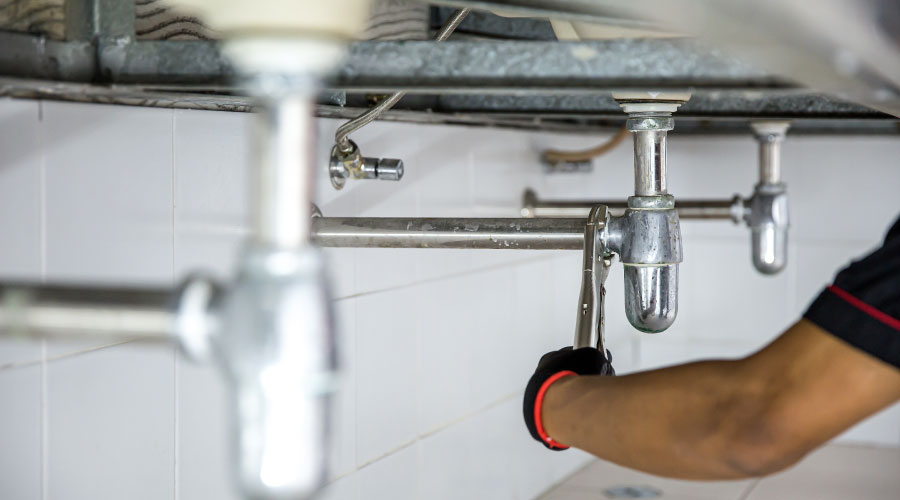Outdoor Water Use Needs to be Watched Closely as Well
Water use outdoors often accounts for a large portion of a facility's water footprint, but using less water outdoors doesn't mean you can't have a green landscape. A well-designed landscape should be supported by healthy soils with appropriate grading, mulches, regionally-appropriate plant choices, appropriately-sized turf areas, and hydrozones.
Most importantly, healthy soils allow water to properly infiltrate and help healthy plant root systems to develop. Also essential to water efficient landscaping are appropriately graded sites with gentle slopes. This allows water to stay where it is applied instead of leading to stormwater runoff which in addition to posing a significant problem in and of itself, means water is not being delivered to the root zone of the plant. Mulches on landscaped beds can help keep soils cool and minimize evaporation. An appropriate plant palette consisting of drought-tolerant, native or regionally-appropriate species lays a solid foundation for a water-efficient landscape, reducing water requirements as well as time and cost to maintain the landscape.
If you use an irrigation system to water your landscape, it could potentially be losing water from evaporation, wind, or runoff due to overwatering and improper system design, installation, or maintenance. Water-efficient irrigation can help cut the amount lost by up to 50 percent through techniques such as water budgeting and seasonal scheduling. Follow these tips to ensure your water doesn't go to waste outdoors:
- Recirculate water in decorative fountains, ponds, and waterfalls. Shut off these features when possible to reduce evaporation losses. Check water recirculation systems annually for leaks and other damage. Consider using onsite alternative water sources, such as rainwater, in these systems.
- Do not use water to clean sidewalks, driveways, parking lots, tennis courts, pool decks, or other hardscapes.
- Periodically review landscape service agreements to incorporate water efficiency. Consider selecting landscape contractors trained in water-efficient or climate-appropriate landscaping. WaterSense irrigation partners have been certified through a program focused on water efficiency, and they can help design and install, as well as maintain and audit your irrigation system to operate more efficiently.
To reduce water use when retrofitting an entire irrigation system, consider replacing existing system controllers with smart technology that waters plants by using weather or soil moisture information to schedule irrigation according to plant needs. WaterSense is in the process of developing a specification for weather-based irrigation controllers that water landscapes only when local weather conditions require it.
Human Behavior Modification
Water-efficient equipment is important, but it's also important to remember that human behavior is involved with nearly every item that uses water in your facility. Educating building occupants, employees, and visitors can make a real difference in the effectiveness of your water-efficiency efforts. Inform employees about the facility's commitment to water efficiency and the water management program through staff meetings, posters, emails, newsletters, and other communications. Signage, brochures, and other promotional materials can inform visitors, customers, and others about the facility's water-efficiency program and actions they can take in restrooms or other areas to save water.
Relevant custodial and cleaning personnel, as well as everyday users, should be reminded to report leaks. A user-friendly hotline or other communication system can make it easy for employees to report water leaks or other wastes of water and energy. WaterSense promotes Fix a Leak Week the third week of every March, which is the perfect time to educate employees about finding and fixing leaks at home as well as at the facility.
By assessing your facility's water use, developing a plan that identifies priority projects, and implementing these projects, you can also ensure your building isn't sending water — and money — down the drain.
Tara O'Hare is the implementation and recruiting lead for the U.S. Environmental Protection Agency's WaterSense program. WaterSense, a partnership program sponsored by EPA, seeks to protect the future of our nation's water supply by offering people a simple way to use less water with water-efficient products and services. Since the program's inception in 2006, WaterSense has helped consumers save a cumulative 46 billion gallons of water and $343 million in water and sewer bills.
Related Topics:













